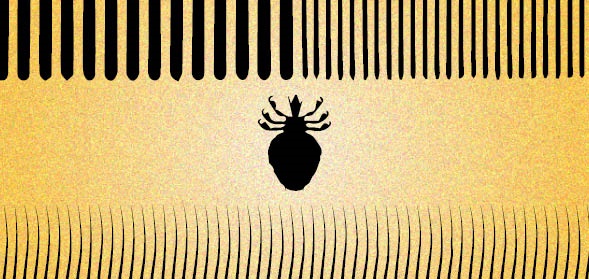

We take a closer look at head lice and how to keep these little critters at bay.
What are head lice?
Head lice are wingless, parasitic insects that live and feed on blood from the human scalp. They are white to grey-brown and about the size of a sesame seed. These tiny insects infest in human hair, and sometimes in the eyebrows and eyelashes.
Head lice are spread by head-to-head contact. They climb from the hair of an infected person to the hair of another. An infestation of head lice most often affects children. However, it is possible for people of any age to become infested with these pesky creatures.
Signs and symptoms
- Itching of the scalp, neck and ears.
- A ticklish feeling or crawling sensation on the scalp or neck.
- Red, irritated skin on the scalp and neck as a result of excessive scratching.
- The presence of lice or nits (lice eggs) on the scalp or on shafts of hair.
- Difficulty sleeping, which can lead to irritability.
Myths about head lice
1. Head lice are a sign of poor hygiene. It is actually not related to poor hygiene. Head lice prefer clean hair over dirty hair.
2. Head lice can jump from head to head. Head lice do not jump, hop or fly from one person to the next. They are spread through direct head-to-head contact.
3. You can get head lice from pets. Head lice are human-specific. You cannot give your pets head lice either.
4. People with short hair are at a lower risk for head lice. The length of your hair does not impact your risk of getting head lice. It can affect all hair types, regardless of length and condition.
5. Head lice can spread disease. Head lice do not carry or spread any known diseases.
Why is it a common occurrence in children?
Children have frequent head-to-head contact with other children, usually from interacting at sports activities, games, slumber parties and camping. The playground and childcare centres also provide prime breeding and sharing ground for lice. Children also tend to be lax with their personal space. They are more likely to share personal items (clothing and hairbrushes), which make it easy for head lice to travel.
Keep your child lice-free
- If your child has lice, make sure that the first thing you do is notify the school. To prevent them from spreading, treat and get rid of the lice immediately. There are several natural remedies, prescription medications, and over-the-counter options that can kill head lice. Before going ahead with any treatment, consult your doctor or pharmacist.
- Once the lice and its eggs have been cleared and treatment is complete, thoroughly clean all bedding, furniture, carpets and clothing that had direct contact with your child. Hairbrushes and other hair accessories should also be cleaned properly.
- To prevent future head lice incidents, teach your child to avoid head-to-head contact with other children as much as possible. Reinforce that they stop sharing clothing, hair accessories or anything that involves touching the heads of their friends.





 Publications
Publications
 Partners
Partners














